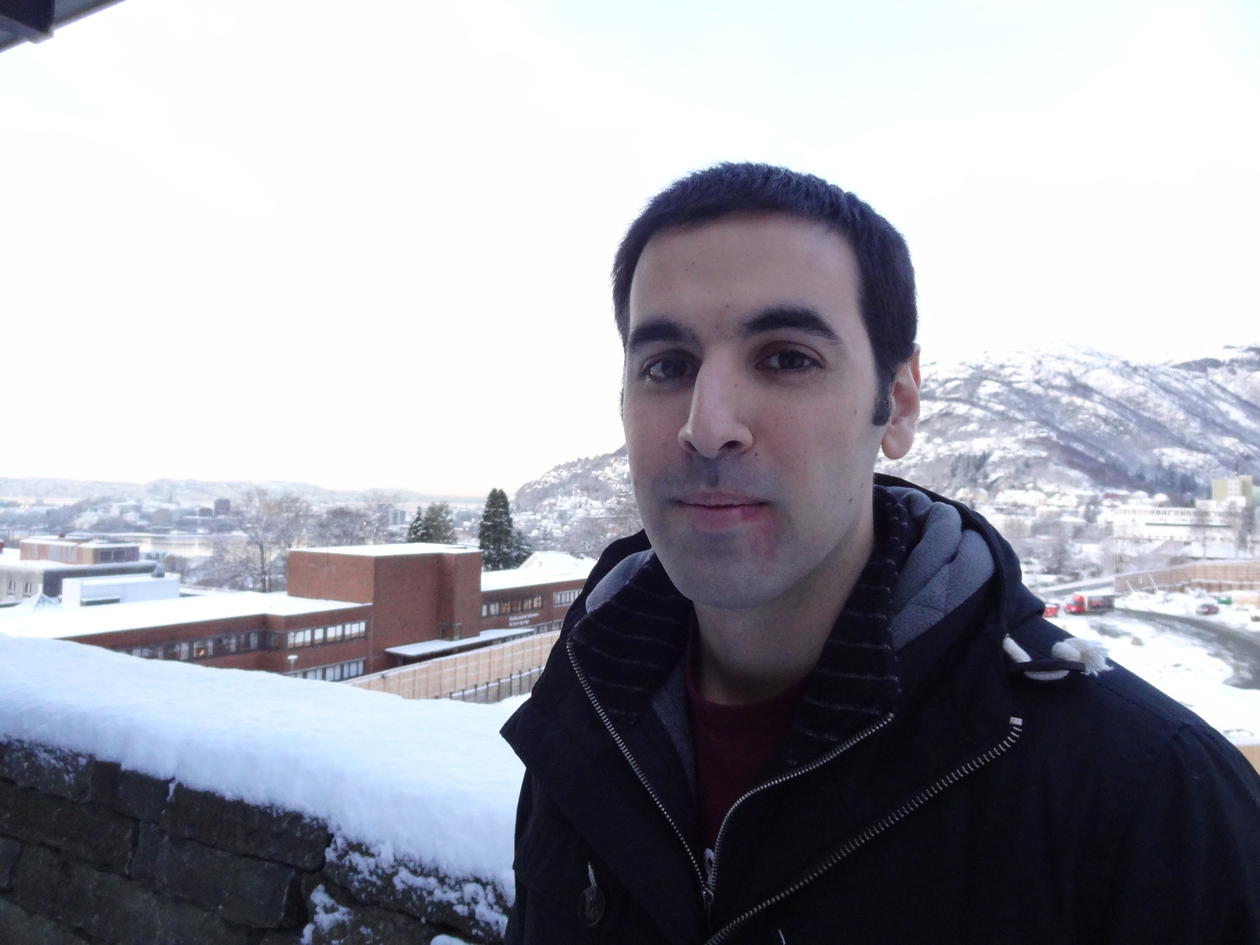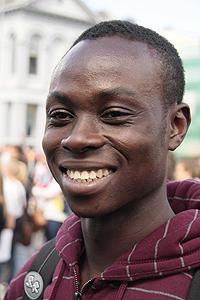Cross-disciplinary study
Biomedical Image Sciences is a relatively new field of study. We have interviewed two students who have chosen this study track in the Master's Programme in Medical Biology.
Hovedinnhold
Michael Quaye:
Why did you choose this study track?
I first did my bachelor in physics, then majored in medical physics. When I saw the imaging course, it seemed like a course I could make use of both medicine and physics, as well as many other things. There are a lot of possibilities inherent in this combination.
What is the most interesting aspect of it?
BMED360 – In vivo imaging and physiological modeling - is a very interesting and challenging course. I used some of the digital tools from the course earlier in my studies, but back then I just handed my data over to the teachers and they would process the numbers into graphs and visualizations. Here, I learn how to do exactly that, and it’s very interesting. You get to know how to use data to highlight and visualize the aspects you want.
What kind of career path are you currently thinking about?
I feel like I’m increasing my area of competence all the time on this study track. With the tools I’ve learned to master and the knowledge I have from the courses, I can work with a great number of aspects. I’d like to work as a teacher of medical imaging techniques – perhaps in hospitals in my home country Ghana – if I get the chance.
***
Gerard Dwyer:
Why did you choose this study track?
I took a Bachelor in Biochemistry, and developed an interest in Neuroscience. The Biomedical Imaging Masters degree gives me an opportunity to learn about imaging techniques for investigating the brain. It also gives me the opportunity to diversify my knowledge base with some mathematics, physics and image processing techniques.
What is the most interesting aspect of it?
For me, I think it would be being able to build such a diverse knowledge base; learning some physics, some mathematics and some computer science. It enables you to approach biomedical problems from unique perspectives.
What kind of career path are you currently thinking about?
fMRI (Functional Magnetic Resonance Imaging) has become a really powerful tool for looking at neural activity in disease and aging, as well as the functional architecture in normal processes. I’m eager to explore the use of imaging techniques to find new approaches to basic as well as clinical research. Continuing with a PhD would be great!

